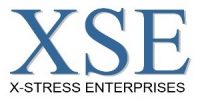Gap analysis generally refers to the activity of studying the differences between standards and the delivery of those standards. For example, it would be useful for a firm to document differences between customer expectation and actual customer experiences in the delivery of medical care. The differences could be used to explain satisfaction and to document areas in need of improvement.
However, in the process of identifying the gap, a before-and-after analysis must occur. This can take several forms. For example, in lean management leaders perform a Value Stream Map of the current process. They then create a Value Stream Map of the desired state. The differences between the two define the “gap.” Once the gap is defined, a game plan can be developed that will move the organization from its current state toward its desired future state.
PRODUCT APPLICATIONS
It should be noted that gap analysis is applicable to any aspect of industry where performance improvements are desired. For example, the product quality gap could be measured by (and is defined as) the difference between the quality level of products expected by customers and the actual quality level. The measurement of the product quality gap is attained in the same manner as above. However, while service delivery can be changed through employee training, changes in product design are not as easily implemented and are more time consuming. Many product innovation experts are discussing new methods of gathering requirements for product design.
Gap analysis can be used to address internal gaps. For example, it is also applicable to human resource management. There may be a gap between what employees expect of their employer and what they actually experience. The larger the gap is, the greater the job dissatisfaction. In turn, job dissatisfaction can decrease productivity and have a negative effect on a company’s culture.
Ford Motor Co., for example, utilized gap analysis while developing an employee benefit program. While management may believe it has a handle on employee perceptions, this is not always true. With this in mind, Ford’s management set out to understand employee desires regarding flexible benefits. Their cross-functional team approach utilized focus groups, paper and pencil tests, and story boards to understand employee wants and needs. Their team, consisting of finance, human resources, line managers, benefits staff, and consultants, identified gaps in benefit understanding, coverage, and communications. As a result of gap analysis, Ford implemented a communications program that gained employee acceptance.
BIBLIOGRAPHY
“Gap Analysis.” Encyclopedia of Management. 2009. Encyclopedia.com. (May 19, 2016).http://www.encyclopedia.com/doc/1G2-3273100117.html
